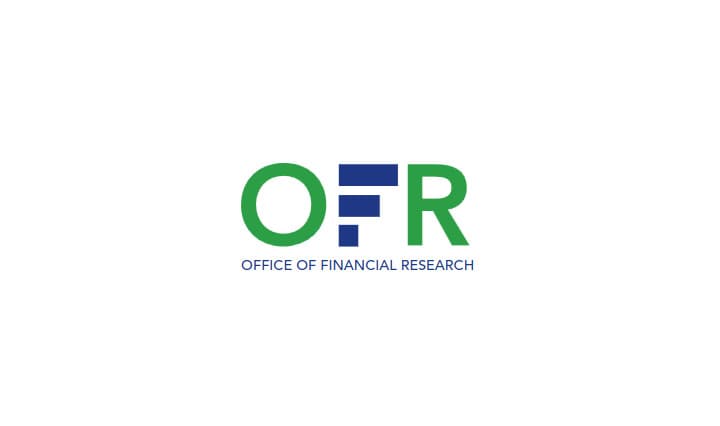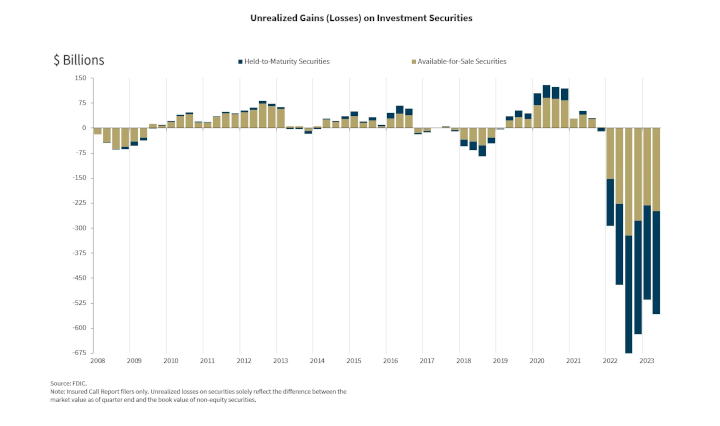Distressed Firms and the Large Effects of Monetary Policy Tightenings: "the share of nonfinancial firms in financial distress has reached a level that is higher than during most previous tightening episodes since the 1970s"

Distressed Firms and the Large Effects of Monetary Policy Tightenings
Ander Perez-Orive and Yannick Timmer
- The stance of U.S. monetary policy has tightened significantly starting in March 2022.
- At the same time, the share of nonfinancial firms in financial distress has reached a level that is higher than during most previous tightening episodes since the 1970s.
Our results suggest that in the current environment characterized by a high share of firms in distress, a restrictive monetary policy stance may contribute to a marked slowdown in investment and employment in the near term. Moreover, our results point to financial factors as an explanation for the stylized fact in the literature that tightening shocks tend to transmit more to aggregate spending and employment than easing shocks (Barnichon et al., 2017; Angrist et al., 2018; Jordá et al., 2020; Debortoli et al., 2020; Barnichon et al., 2022).
Why might firms' distress be responsible for the large effects of monetary policy tightenings? Our hypothesis is that following a policy tightening, access to external financing deteriorates more for firms that are in distress than for healthy firms, while following a policy easing, external financing conditions do not change appreciably enough for the two groups of firms to trigger a differential response. As a result, investment and employment are more likely to fall for distressed firms than for healthy firms following tightening shocks, but to respond weakly and similarly to easing shocks for both types of firms. A corollary of this mechanism is that borrowing falls significantly more for distressed than for healthy firms after tightening shocks, and that borrowing for both types of firms does not respond significantly to expansionary shocks. Our evidence is consistent with this corollary and provides support for our hypothesis.
Empirical Strategy and Data
Our empirical strategy uses firm-level data and exploits the heterogeneous response of investment and other variables to monetary policy surprises of firms with different degrees of financial distress. We estimate the response of the cumulative growth rate of the firm-level stock of real capital (or of employment or real debt) using Jordá (2005) local projections. We classify firms into those that are in distress and those that are not (denoted "healthy"). We consider a firm to be in distress if it is closer to default than the firm in the 25th percentile of the distribution of distance to default, and to be healthy otherwise. We estimate for each sample of firms (distressed or healthy) separately the average response of the outcome variable (investment, employment, or debt) to tightening and easing shocks.
Our sample consists of U.S. nonfinancial firms covered by Compustat at a quarterly frequency between 1990 and 2022. For these firms, we use distance to default to measure the probability of firm default over the near-term horizon. As shown by Farre-Mensa and Ljungqvist (2016), distance to default is superior to other common proxies for firms' ability to borrow.
Finally, to construct monetary policy shocks, we follow Miranda-Agrippino and Ricco (2021). These authors follow a well-established literature that uses high-frequency financial market surprises around key monetary policy announcements to identify unexpected variations in policy. Moreover, they separately identify exogenous policy shocks from shocks about new information from the Federal Reserve regarding the state of the economy. These monetary policy shocks are, therefore, orthogonal to firms' investment opportunities. We aggregate the shocks at the quarterly frequency and split shocks into tightening (positive surprises) and easing shocks (negative surprises). For convenience, we flip the sign of easing shocks, from negative to positive, so that all shocks have positive values.
Results
We start by showing that monetary policy tightening shocks have stronger effects on investment and employment than easing shocks. Figure 2 displays the estimates of the average dynamic responses of investment and employment to a one standard deviation surprise policy tightening across all firms in our sample. The left panels show that contractionary shocks generate a strong and statistically significant drop in investment and employment. A one standard deviation surprise increase in interest rates is associated with a cumulative drop in investment of 2.8 percent of the initial capital stock after 2 years, and an average drop in employment of 1.2 percent. The right panels report the effects of expansionary shocks and show that these shocks do not generate a response of investment or employment that is statistically different from zero.

Next, we test our potential explanation for these asymmetric effects of monetary policy on investment: that financial factors are responsible for the large effects of tightening shocks but do not play an important role for easing shocks. According to our hypothesis, following a policy tightening, the ability to borrow and invest deteriorates more for distressed firms than for healthy firms, while following a policy easing, external financing conditions and investment do not respond noticeably for the two groups of firms. In line with this hypothesis, Figure 3 shows that there is a large difference in the investment response to tighter monetary policy of distressed and healthy firms: healthy firms (Panel A) are unresponsive, while distressed firms (Panel B) reduce their investment strongly. Economically, a one standard deviation tightening shock is associated with a cumulative drop in investment after two years of approximately 3.7 percent of the initial capital stock for distressed firms, while the effect on the capital stock of healthy firms is statistically and economically negligible. In contrast to tightening shocks, the bottom panels of Figure 3 show that the response of investment to easing shocks is not statistically different from zero at conventional significance levels for both distressed and healthy firms.

If external financing conditions respond strongly to contractionary monetary policy when firms are in distress but respond weakly for firms that are not in distress or after a policy easing, as we hypothesize, we should also observe borrowing respond strongly to contractionary monetary policy when firms are in distress but respond weakly for healthy firms or after a policy easing. Our evidence is consistent with this corollary. Figure 4 plots the responses of the change in the log of the real stock of debt. After two years, a one standard deviation tightening shock reduces the debt of firms that are in distress by around 6.9 percent, while it reduces the debt of healthy firms by only 2.3 percent, with the estimate for healthy firms also being much less precise statistically. Moreover, the bottom panels of Figure 4 show that the responses of the debt of both healthy and distressed firms are not statistically different from zero. If anything, the point estimates suggest that borrowing by distressed firms surprisingly declines after easing shocks.

As discussed above, tightening shocks also have, on average for all firms, stronger effects on employment than easing shocks. Figure 5 displays the dynamics of employment separately for distressed and healthy firms in response to monetary policy shocks. As for investment, employment seems unresponsive to accommodative shocks, but contractionary shocks significantly reduce employment for firms that are in distress. Our results thus suggest that the transmission of monetary policy—particularly of policy tightening—to both investment and employment is stronger when the share of distressed firms in an economy is higher.

Conclusions
The evidence in this note carries two important policy implications. First, the strength of the transmission of monetary policy depends on the aggregate distribution of firm financial distress. Second, financial distress is important to explain why the response of investment and employment is stronger after tightening shocks than after easing shocks.
Do our results suggest that the monetary policy tightening engineered since 2022 might have substantial effects on investment and employment given the high share of firms currently in distress relative to previous tightening cycles? While answering this question is difficult, back of the envelope calculations indicate that the effects may be large. To start with, total investment in our sample of publicly-listed firms accounts for about 60 percent of aggregate U.S. investment (Cloyne et al., forthcoming) and aggregate investment is one of the most responsive components of GDP to monetary shocks (Boivin et al., 2010). There is also evidence (Dinlersoz et al., 2018) that employment for Compustat firms accounts for around one-third of total U.S. non-government employment. With the share of distressed firms currently standing at around 37 percent, our estimates suggest that the recent policy tightening is likely to have effects on investment, employment, and aggregate activity that are stronger than in most tightening episodes since the late 1970s. The effects in our analysis peak around 1 or 2 years after the shock, suggesting that these effects might be most noticeable in 2023 and 2024.
TLDRS:
Since March 2022, U.S. monetary policy has become tighter. More businesses are financially distressed now than in previous instances of tightening since the '70s.
- Studies suggest that these conditions could lead to significant declines in investment and jobs in the near future.
The theory is that when monetary policy gets tougher, distressed firms find it harder to secure external funding compared to healthy firms.
- These troubled companies then cut down on investments and jobs more than their healthier counterparts.
- On the other hand, when policy is eased, both types of firms respond similarly and weakly, not affecting investment and job rates dramatically.
- Data from U.S. nonfinancial firms from 1990 to 2022 was used for this analysis.
- To measure the potential for a firm's default, they used a system called "distance to default", which they claim is better than other methods to predict borrowing ability.
The findings show that tight monetary policy has a stronger impact on investment and jobs than easy policy.
- Also, distressed firms react more severely to a tight policy by reducing their investment significantly, while healthy firms' reactions are negligible.
- Both types of firms didn't show a significant change in investment in response to easy policy.
- The evidence suggests that how hard a monetary policy hits, particularly when it's getting tighter, is stronger when there are more distressed firms around.
So, this current cycle of monetary tightening, with a high number of firms in distress, could potentially lead to significant impacts on investment, jobs, and overall economic activity.
- These effects could become more noticeable in 2023 and 2024.



